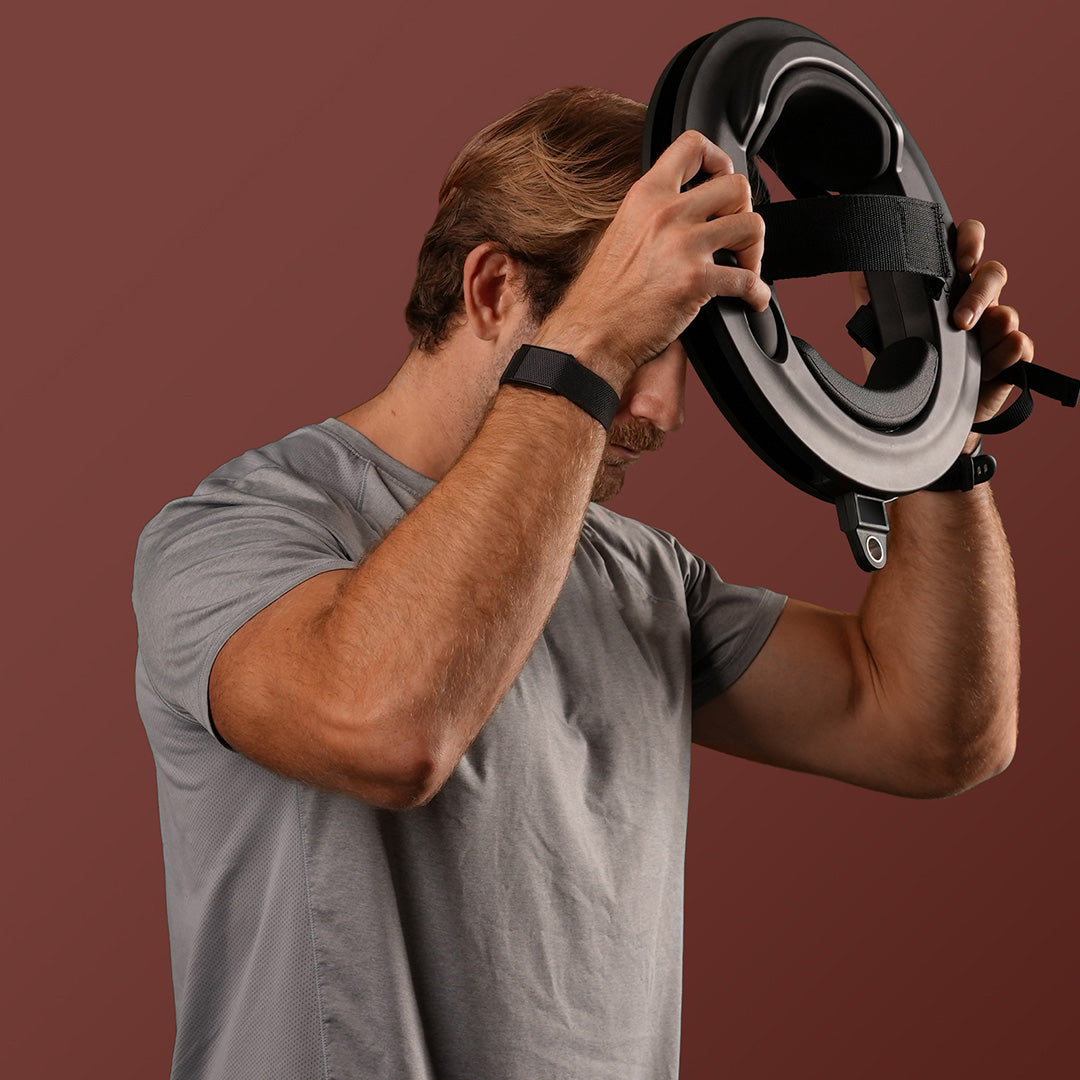Stress can manifest in a wide range of symptoms. Sometimes, the physical symptoms of stress are fleeting. You may get a headache here, a stomachache there; but once your stress goes back to normal levels, the symptoms go away, too. But more often than not, stress can cause symptoms that last a long time. And in these situations, getting rid of symptoms usually requires an intervention.
This is the case for the stress that we carry in the shoulders and neck. Chronic stress can lead to muscle tension in these areas, causing tension-type headaches, neck pain, limited range of movement, and many other related symptoms.
Needless to say, these symptoms can decrease your quality of life and limit your ability to perform daily tasks. So, how do you stop carrying stress in the shoulders and neck? And why do we carry stress in these areas in the first place?
Let’s find out!
Why Do We Carry Stress In The Shoulders and Neck?
Stress increases the level of several hormones in the body, including cortisol and epinephrine. These hormones are responsible for the body’s stress response; they signal the heart to pump harder, your blood pressure to increase, and your muscles to tighten.
When you are constantly stressed, your muscles remain contracted for longer periods, which can lead to neck and shoulder pain. In most cases, muscle soreness and stiffness will not go away easily without some kind of physical intervention.
Is Carrying Stress In Your Shoulders and Neck Normal?
Stress is a normal part of everyone’s life. Experiencing tension in your neck and shoulders is inevitable for almost any environment, whether it’s inherently stressful or not. Nevertheless, carrying stress in your shoulders and neck is uncomfortable, frustrating, and somewhat detrimental to one’s quality of life.
How Can I Get Rid Of Stress In The Shoulders and Neck Area?
Improving the strength and flexibility of your neck and shoulders can help relieve tension and make you less susceptible to experiencing pain in these areas. Here are some of the best ways you can do that:
Stretching
Stretching may be the last thing on your mind when you are already in pain, but stretching the muscles in your neck and shoulders can help relieve pain significantly. Try these simple stretches that target your neck and shoulders:
Seated Neck Stretch
- While sitting, put your left hand under your bottom and the other hand on the top of your head.
- Pull your head to the right gently until your ear is just about to touch your shoulder. Hold the position for 30 seconds and then repeat on the other side.
Chin to Chest Stretch
- Starting in a sitting position, put both hands on the top of your head with your elbows pointing outward.
- Pull your head until your chin is resting on your chest. Hold for 30 seconds.
Side-to-Side Stretch
- Sit upright, pull your shoulders back, and put your head and neck in the natural position.
- Rotate your head from side to side gently while keeping your chin parallel to the floor.
- Do this 5 to 10 times for each side.
Shoulder Rolls
- Starting from a neutral position with your arms at your sides, roll your shoulders in a clockwise motion.
- Complete 5 to 10 rotations, then do 5 to 10 more while rolling your shoulders counter-clockwise
Hot or Cold Therapy
Applying heat can increase blood flow to the affected area, helping reduce stiffness in your muscles. Treating the area with something cold, on the other hand, helps reduce swelling and pain. Both of these therapies work best for short-term relief.
Here are several ways you can apply heat and cold therapy to your shoulders and neck:
Heat Therapy
- Placing a warm compress (e.g. a hot water bottle wrapped in a towel) to the affected area
- Taking a warm bath or shower
- Using an electric heating pad or heated gel packs
Cold Therapy
- Applying a cold compress on the affected area (e.g. ice packs)
- Massaging a piece of ice on the affected area
- Taking a cold shower
Shoulder and Neck Training
Shoulder and neck training are long-term solutions to avoiding stress in these areas. Training your shoulders and neck increases the strength, flexibility, and endurance in these muscles, thereby making you less susceptible to developing tension due to high amounts of stress.
Now, let’s go over several shoulder and neck exercises you can incorporate into your workout routine. Pro tip: use neck exercises equipment for best results!
Neck Flexion
- Stand up straight, then slowly bend your head downward.
- Return to the starting position and repeat 5-10 times.
- You can increase the difficulty by using a resistance band or a 4-way neck machine.
Neck Lateral Flexion
- Stand tall and look ahead.
- Bring your head to the side until your ear is almost to your shoulder. Do not lift your shoulders.
- Return to the starting position and repeat on the other side.
Dumbbell Shrugs
- Hold a pair of dumbbells at your sides using a neutral grip.
- While keeping your arms straight, lift your shoulders up to your ears.
- Hold the position for one breath and lower your shoulders back down.
- Repeat 10 times, then do 2 more sets.
Shoulder Blade Squeeze
- In a standing position, raise your arms to shoulder height with your elbows bent and hands facing forward.
- Move your arms back to squeeze your shoulder blades together.
- Hold for 10 to 15 seconds, then repeat 5 to 10 times or as desired.
Learn How to Manage Stress
Of course, we also have to address the primary cause of the tension in your muscles: chronic stress. While stress is always going to be a normal part of life, it helps to reduce its impact on both your physical and mental health.
Here are some general tips on how to manage stress more effectively:
At Work
- Avoid working during breaks.
- Go home on time; do not work overtime unless it is absolutely necessary.
- Set clear boundaries with your co-workers and supervisors.
- Prioritize your mental health.
At Home
- Ask for help from family members when you need it.
- Instead of letting chores pile up, try to do one every day.
- Establish quiet time to allow your mind to rest after a long day.
With Friends
- Learn how to say ‘no’ to commitments you cannot make.
- Opt for relaxing activities instead of overstimulating ones.
- Always try to address conflict in a healthy, communicative manner.
Other Ways to Get Rid of Stress in the Neck and Shoulders
Apart from stretches, exercises, and cold/heat therapy, here are other ways you can reduce stress in the neck and shoulder areas:
Fix Your Posture
- Whether sitting or standing, make sure your spine is in the proper alignment.
- Avoid hunching and slouching.
- Use ergonomic furniture with proper support for your back.
- Practice neck posture exercises.
Avoid Carrying Heavy Weights
- As much as possible, use a rolling bag instead of a heavy backpack.
- When using a backpack, make sure the bottom of the load is supported by your butt, and make sure the straps are even.
- Practice packing light.
Take Frequent Breaks
- When working in front of the computer, stand up and stretch every once in a while.
- Try to walk around during your breaks.
- Give your eyes a break as well by looking away from your computer every 20 minutes for 20 seconds.
Final Thoughts On Carrying Stress In The Shoulders and Neck
Stress may be the primary reason why you’re carrying tension in your shoulders and neck, but it’s certainly not the only contributing factor. If you want to stop stress from affecting your mental and physical health, it is necessary to build a body that is more able to withstand–starting at the very top.
As such, we highly encourage anyone wanting to live a healthier, pain free lifestyle to bulletproof their neck. A stronger, more resilient neck and shoulder region will be better equipped to handle the stress of everyday life - along with physical trauma, should it ever occur.











